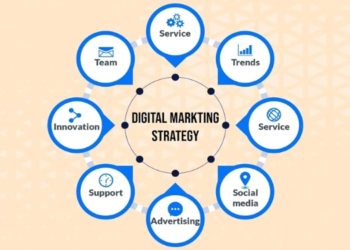The ability to locate, manage, and utilise assets efficiently can make or break a business. As the digital age evolves, businesses increasingly rely on digital asset management (DAM) systems to streamline their processes and optimise workflow. So, how does DAM truly affect business productivity?
Boosting Efficiency Through Centralisation
Businesses handle vast amounts of digital content daily, from images to marketing materials and reports, making a centralised system essential. Instead of sifting through countless folders, employees can quickly access assets from one centralised location. Platforms like Asset Bank provide a secure, organised digital repository where assets are easy to find. For businesses managing large volumes of digital assets, time saved on searches can boost productivity by up to 30%. This improvement allows employees to focus more on tasks that contribute directly to business growth and innovation.
Streamlining Collaboration Across Teams
A centralised system improves team collaboration by allowing everyone to access the same set of updated materials at any time. For example, a content creation team can upload assets to the DAM system, enabling the design or social media team to access them instantly for campaigns. This reduces the need for emails and file transfers, minimising errors. Additionally, modern DAM systems integrate with tools like project management and content management software, providing better tracking of asset usage, approval workflows, and version control, ensuring all teams work with the latest files.
Enhancing Brand Consistency
Consistency is essential for a strong brand. Digital asset management (DAM) helps businesses maintain a cohesive brand identity by centralising approved logos, colour schemes, and templates. This reduces the risk of using outdated or incorrect branding. Every piece of content—whether it’s an email, social media post, or presentation—will consistently align with the company’s messaging and aesthetic. DAM systems like Asset Bank can automate processes like enforcing file naming conventions and tagging assets with relevant metadata. This simplifies the task of maintaining brand guidelines, ensuring consistency across all teams and assets.
Supporting Scalability
As businesses grow, managing digital assets becomes more complex. A robust DAM system scales with your needs, ensuring streamlined file storage, access, and distribution. With flexible storage options, powerful search functions, and user permissions, DAM systems support growth and help businesses efficiently manage increasing volumes of digital assets.
Driving Better Decision-Making
One of the key advantages of DAM systems is their ability to provide valuable insights into how assets are being used. By tracking user interactions with assets, businesses gain deeper understanding of which materials resonate most with audiences. This data can then inform future strategies, from marketing campaigns to product development, creating a cycle of continuous improvement and efficiency.
Bringing it All Together
Incorporating a digital asset management system into your business operations isn’t just about storing files; it’s about transforming how your team works. By centralising assets, streamlining workflows, and enhancing collaboration, businesses are empowered to focus on innovation and growth. With reduced time spent searching for and managing assets, employees can invest more energy into creative problem-solving and strategic decision-making, both of which are crucial for long-term success.
Final Remarks
The efficiency boost offered by digital asset management is undeniable. As businesses continue to generate and rely on vast quantities of digital assets, a streamlined system will not only improve day-to-day operations but also empower organisations to adapt and scale in an increasingly competitive market. Embracing the power of DAM is no longer just a convenience—it’s a necessity for businesses looking to thrive in the digital era.
David Prior
David Prior is the editor of Today News, responsible for the overall editorial strategy. He is an NCTJ-qualified journalist with over 20 years’ experience, and is also editor of the award-winning hyperlocal news title Altrincham Today. His LinkedIn profile is here.











































































